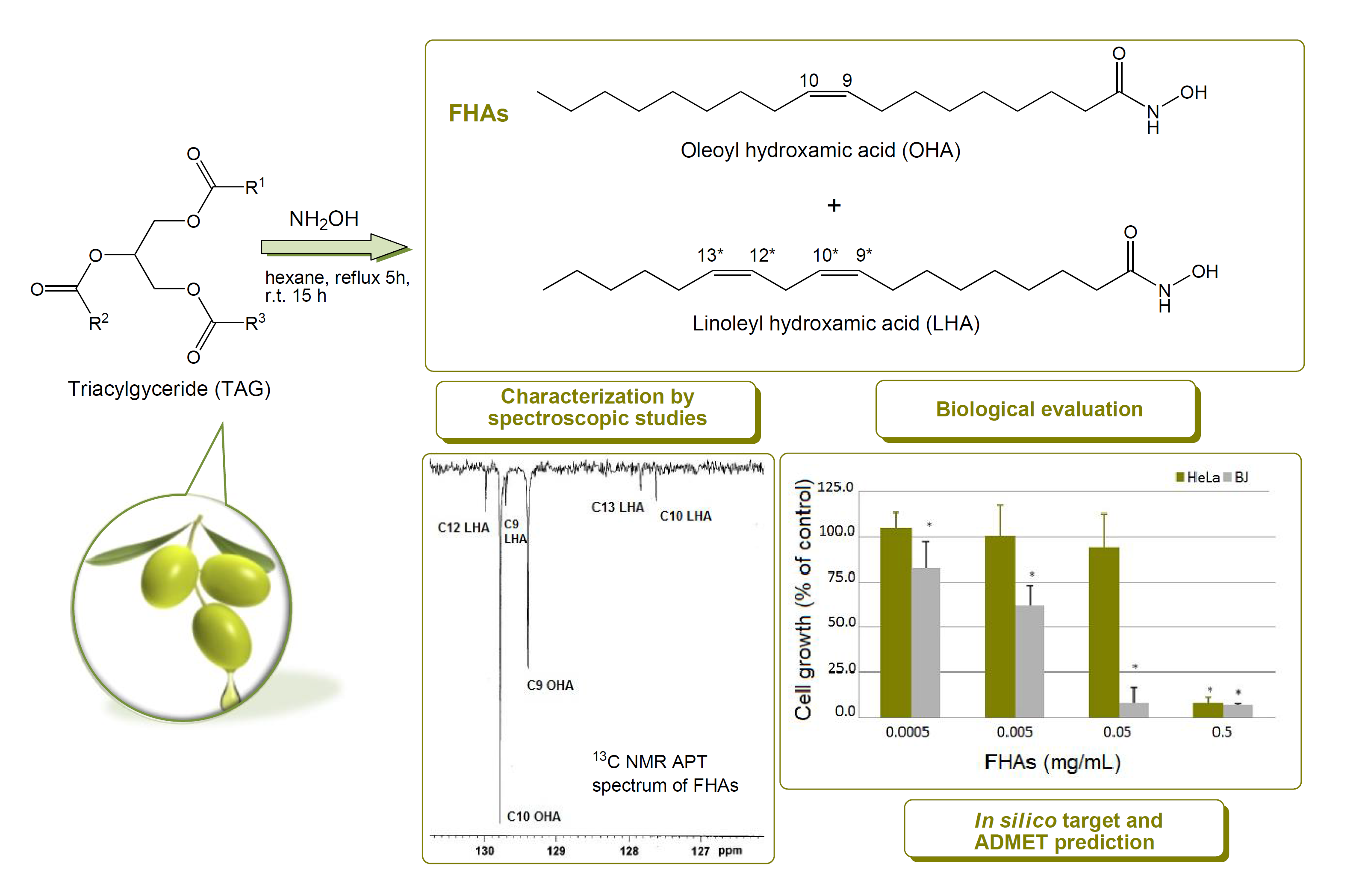A fatty hydroxamic acid (FHA) mixture synthesized from olive oil triacylglycerides by hydroxylaminolysis and composed predominantly of oleyl and linoleyl hydroxamic acid (OHA and LHA, respectively) was characterized by means of IR, Raman, MS and 1D and 2D 1H- and 13C-NMR spectroscopy. The ratio of OHA and LHA (4:1) was confirmed by MALDI TOF/TOF mass spectrometry. The radical scavenging and the Fe2+-chelating activity, as well as antioxidant activity in β-carotene-linoleic acid and the Fe3+-reducing power assays of the FHAs yielded positive results. The results of FHA cell toxicity on normal fibroblast (BJ) and a tumour cell line (HeLa) revealed that the normal cell line was sensitive to FHAs within the entire range of applied concentrations (5 × 10−4 mg/mL to 5 × 10−1 mg/mL), while the HeLa tumour cell line was sensitive only at the highest FHA concentration (5 × 10−1 mg/mL). In silico target prediction indicated cannabinoid receptors 1 and 2, the fatty-acid amide hydrolase 1 and hystone deacetylases as the most probable targets of OHA and LHA. According to ADMET predictor analysis, the safety profiles of OHA and LHA are comparable to that of SAHA (vorinostat) the histone deacetylase inhibitor in use as an antineoplastic and immunomodulating agent.

